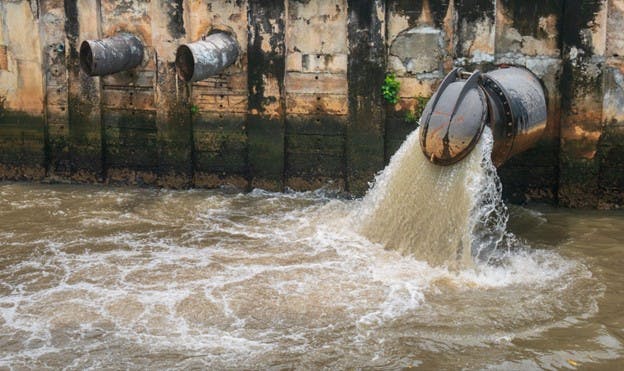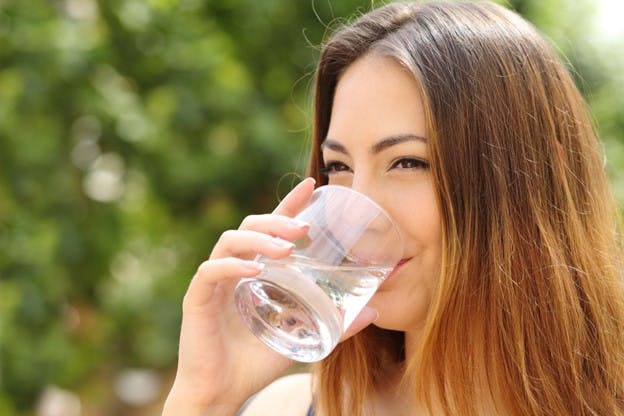May 2023
Here's the Hard Truth About Tucson Water Quality
Tucson is a great city and has many claims to fame. Tucson is a UNESCO City of Gastronomy, it has wonderful national parks, it’s home to the biggest air museumin the world, and it invented quarter horse racing. And if there’s one thing above all that Tucson has a lot of, it’s sun. As the sunniest city in the United States (350 sunny days per year), residents need to drink a lot of water, and that means Tucson water quality is of the utmost importance.
Where Does the City of Tucson Get Its Drinking Water?
After over a century of Tucson getting its water from local groundwater sources, high contamination levels of trichloroethylene (TCE), 1,4-dioxane, and polyfluoroalkyl substances (PFAS) mean most of Tucson’s water is now imported from the Colorado River by the Central Arizona Project.
Tucson uses about 20 billion gallons of Colorado River water each year. This water is placed in natural underground aquifers to recharge before wells pump it back out of the ground so it can be treated with chlorine and delivered to you. Your drinking water is delivered by Tucson Water.
What Contaminated the Tucson Water Supply?
In the early 1950s, Hughes Aircraft (now Raytheon Missile Systems) opened a missile base in Tucson and began using TCE to clean airplane engine parts. Disposal of the chemical was done by dumping it into pits or down drains.
In 1981, it was found that the chemical heavily contaminated the soil and groundwater on Tucson’s south side. Seven city wells were shut down, but for decades residents have reported instances of multiple cancers associated with TCE.
The U.S. Environmental Protection Agency (EPA) stepped in while residents sued the city of Tucson and others. Tucson was mandated to start cleanup efforts, including opening a water treatment plant called the Tucson Area Remediation Project (TARP) which became operational in 1994.
In 2002, further testing of the water found that there were also very high amounts of another carcinogenic chemical known as 1,4-dioxane. This contamination was from the same dumping that started in 1952, but no one knew to look for it until the 2000s. Once found, a second water treatment plant was opened to help handle the cleanup.
After 27 years in service, TARP was shut down in 2021 after high concentrations of PFAS were found in the water, due to activity from military bases like Davis-Monthan Air Force Base, as well as Tucson International Airport. PFAS are known as “forever chemicals” because they build up in the environment and never break down.
In May of 2022, the treatment plant was brought back in operation, but due to the discovery of high amounts of PFAS, the treated water from the plant can no longer be sent to houses or businesses for the purposes of drinking or cooking with it.
Now all groundwater sources are monitored for chemical contamination, and individual city wells are taken out of the supply chain when contamination levels spike.
How Has Tucson Water Quality Been Affected by the Past?
With Tucson springing up right in the middle of the Sonoran Desert, safe drinking water is a precious commodity. For much of Tucson’s history, it has been able to meet all of its water needs from groundwater sources beneath the city. Unfortunately, due to the years of chemical dumping, Tucson has since had to turn to the Colorado River as its main water provider.
Colorado River water is a major source of drinking water for many major cities in the southwest. This, combined with the current drought conditions caused by climate change, are putting this resource in danger of drying up.
Is Tucson Tap Water Safe to Drink?
Since 1974, all municipal water suppliers in the U.S. are subject to minimum safety and quality standards set by the EPA. Tucson is no exception. Tucson water meets or exceeds all standards for safety and quality.
After decades of lawsuits over water contamination, Tucson Water not only does all of the mandatory testing and water treatment expected by the federal and state government, but the city voluntarily tests for other contaminants which have no legal limits but are on the secondary standards watch list of the EPA.
Currently, the city of Tucson is working with the Arizona Department of Environmental Quality (ADEQ) to try to clean up its local environment in hopes of establishing a backup water supply to the Colorado River water currently being used.
While Tucson Water does extensive testing to stay in line with current EPA standards for water quality, meeting current regulations doesn’t always mean an area’s water is safe. There are countless contaminants in water that aren't regulated or tested for, like microplastics. Many aren’t even known about.
Tucson is a prime example of this, as the very chemicals that resulted in the shutting down of their water wells were consumed by local citizens for decades before anyone knew to test for them.
Beyond that, regulations take time to pass. The Washington, D.C.-based water watchdog group the Environmental Working Group (EWG) notes that the EPA hasn’t updated any of their water regulations in almost 20 years, even as the science has advanced.
Let’s take a look at some of the contaminants that are found in Tucson water that are legal but that the EWG says are too high based on the most recent science.
What Impurities Are Affecting Tucson Water Quality?
Having a better understanding of how Tucson treats its water can help us see some of the potential problems.
Like most modern cities, Tucson treats its tap water with chlorine. While this can affect the taste and smell of the water, the small amount added in order to kill potentially deadly pathogens is considered safe for consumption.
Haloacetic Acids (HAA5)
There are five haloacetic acids that make up HAA5: monochloroacetic acid, dichloroacetic acid, trichloroacetic acid, monobromoacetic acid, and dibromoacetic acid. Long-term exposure to HAA5 can lead to cancer, according to the EWG.
Levels of HAA5 in Tucson water have exceeded what the EWG recommends for safety by 12 times.
- EPA maximum allowance: 60 parts per billion (ppb)
- EWG recommended maximum: 0.1 ppb
- Tucson maximum contaminant level: 1.18 ppb
HAA9
HAA9 includes all of the contaminants from HAA5 but adds bromochloroacetic acid, bromodichloroacetic acid, chlorodibromoacetic acid, and tribromoacetic acid. These are also cancer-causing.
Levels of HAA9 in Tucson water have exceeded what the EWG recommends for safety by 65 times.
- EPA maximum allowance: No legal limit
- EWG recommended maximum: 0.06 ppb
- Tucson maximum contaminant level: 3.93 ppb
Total Trihalomethanes (TTHMs)
TTHMs are formed when chlorine interacts with organic compounds in drinking water. They’re also known to be carcinogenic. This category is made up of four chemicals: chloroform, bromodichloromethane, dibromochloromethane, and bromoform.
Levels of TTHMs in Tucson water have exceeded what the EWG recommends for safety by 73 times.
- EPA maximum allowance: 80 ppb
- EWG recommended maximum: 0.15 ppb
- Tucson maximum contaminant level: 10.9 ppb
What Other Contaminants Are in Tucson’s Water?
Besides the disinfection byproducts, there are several naturally occurring contaminants that can affect Tucson water quality. Some of these are:
Chromium (Hexavalent)
Chromium is a common heavy metal contaminant often found in U.S. water supplies. It’s both naturally occurring and an industrial byproduct. Although it’s a known carcinogen, the EPA still doesn’t regulate it.
Chromium levels in Tucson water have exceeded what the EWG recommends for safety by 32 times.
- EPA maximum allowance: No legal limit
- EWG recommended maximum: 0.02 ppb
- Tucson maximum detected level: 0.649 ppb
Nitrates
Nitrates usually end up in water supplies through stormwater runoff from fertilizers, but they can also come from septic tanks. They can cause oxygen deprivation in infants and increase the risk of certain cancers.
Nitrate levels in Tucson water have exceeded what the EWG recommends for safety by 13 times.
- EPA maximum allowance: 10 parts per million (ppm)
- EWG recommended maximum: 0.14 ppm
- Tucson maximum detected level: 1.84 ppm
Arsenic
Arsenic is carcinogenic and is known to cause damage to the brain, central nervous system, skin, and blood vessels. Arsenic is a common contaminant in U.S. public drinking water because it can occur naturally in groundwater.
Arsenic levels in Tucson water have exceeded what the EWG recommends for safety by 563 times:
- EPA maximum allowance: 10 ppb
- EWG recommended maximum: 0.004 ppb
- Tucson maximum detected level: 2.25 ppb
Uranium
Uranium is a radioactive heavy metal found both in nature and as a byproduct of oil and gas production. Uranium is a known carcinogen. Legal limits for uranium are measured in picocuries per liter (pCi/L), which is a measure of radioactivity.
Uranium levels in Tucson water have exceeded what the EWG recommends for safety by 4 times:
- EPA maximum allowance: 20 pCi/L
- EWG recommended maximum: 0.43 pCi/L
- Tucson maximum detected level: 1.90 pCi/L
Is Tucson’s Water Hard or Soft?
Tucson has always had hard water, but now that the Central Arizona Project is using the mineral-rich Colorado River as a water source, it's just going to get harder.
Water is an amazing solvent, and it tends to break down rocks and soil minerals as it passes through the ground. Water hardness is a measure of the mineral solids like calcium and magnesium contained in the water.
Hard water isn’t dangerous to drink, but it can wreak havoc on your pipes and water-using appliances. Hard water minerals build up over time inside pipes and fixtures and on all your surfaces. This buildup is very difficult to remove, and the cloudy white stains and chalky flakes it leaves behind are quite unsightly. It can also give bacteria and mold something to grab ahold of so they can start to grow.
Treating hard water requires either a salt-free water conditioner or a water softener.
How to Get the Best Quality Water to Your Tucson Home
Tucson is an amazing desert city with hundreds of thousands of people relying on its infrastructure. The importance of Tucson water quality cannot be overstated. Due to problems with contaminants, Tucson now has most of its water imported.
If you’re concerned about Tucson water quality or you just want to ensure you have the best tasting water coming into your home, HomeWater can help.
HomeWater’s 4-Stage Reverse Osmosis Under Counter Water Filter removes all sorts of contaminants from the water that comes out of your kitchen sink, including chlorine, disinfection byproducts, and PFAS.
Or if you’d rather go for a whole-home approach that connects all your faucets to high-quality, pure water, our HomeWater 4-Stage Whole Home Filter will do the job. Connect a water softener to our whole house water filters and take your clean surfaces back from hard water.
Related Articles
December 2022


